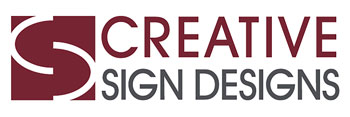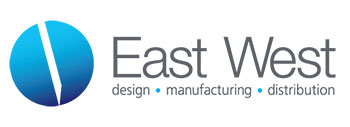You may be wondering why we chose the topic of outsourced manufacturing for our inaugural edition of “Planting Seeds”. Very simple – since the founding of our firm in 2014, outsourced manufacturing has been a consistent theme that we have seen across a wide range of industries and business types. Additionally, Heritage Growth’s prior and current investment partnerships range from businesses providing comprehensive outsourced manufacturing services to companies benefiting from the ability to outsource their manufacturing. Despite mixed political and economic messages on the topic, we believe trends continue to reinforce the ongoing growth of outsourced manufacturing which bodes well for future investment.
History and Outlook
Outsourced manufacturing, similar to other types of outsourcing, was primarily viewed as a way to cut costs by outsourcing simple, low-value commodity products and services. However, over the last 25 years, outsourced manufacturing has evolved to provide a variety of additional strategic benefits to businesses. These include greater flexibility and scalability, increased diversification and specialization of capabilities, improved visibility, better resource utilization and increased profitability. As a result, outsourced manufacturing has become a pervasive force. According to a comprehensive study by Data Bridge Market Research, the global outsourced manufacturing market is expected to grow at a CAGR of 6.95% through 2029.1 This projected expansion, particularly at a rate in excess of expected overall economic growth, underscores the ongoing prominence of outsourcing as a strategic imperative for manufacturers worldwide and highlights favorable tailwinds for the industry.
Drivers of Outsourced Manufacturing
Companies continue to recognize that creating mutually beneficial partnerships with parties that specialize in different parts of the value chain increases productivity and profitability. The attractiveness of this theme has also grown in the private and public markets, which reward companies for greater predictability, lower fixed investment and higher free cash flow. With speed to market becoming increasingly important, Original Equipment Manufacturers (“OEMs”) increasingly rely on outsourced manufacturers who “bridge the divide between concept and manufacturability… [and] manage the process from concept to production. 2 An experienced outsourced manufacturer is “more adept at understanding how to reduce manufacturing complexities and improve processes and operations.”3 With the focus and know-how to navigate disrupted supply chains and innovative technologies to manage workflows, outsourced manufacturers can scale operations to meet customer volume demands while also addressing the regulatory complexities of the market. Additionally, the shift from relying on internal staff to outsourcing partners has led to increased expenditure accountability as OEMs now enjoy more transparency and control over costs, ensuring efficient resource allocation and cost optimization.
Companies are also outsourcing manufacturing to shift further towards an asset-light business model. Once seen as a strategy only used by underperforming companies, the asset-light model is increasingly seen as the gold standard for long-term growth and higher shareholder returns. 4 Here are three examples of how an asset-light model, driven by outsourced manufacturing, supports greater return on capital:
- Revenue Expansion: Without having to worry about production logistics and scaling manufacturing, companies can better focus on their core competencies, such as Research & Development, which is especially important in industries where new technologies could easily disrupt incumbent players.
- Improved Profitability and Cash Flow Generation: Companies outsourcing their production capabilities no longer have to spend a significant percentage of their profits on capital expenditures for machinery and production facilities or bear increased operating expenses to support a larger production and maintenance staff, thus improving margins and providing greater free cash flow.
- Reducing Fixed Costs and Increasing Operating Flexibility: Through transforming fixed assets on the balance sheet into variable costs and minimizing the amount of outside debt and equity required to finance growth, asset-light business models require less invested capital and thus can produce greater returns.5 In a macro-environment where profitability and returns are extremely important to investors, an asset-light company with greater margins, higher free cash flow and stronger returns on capital will receive a more attractive valuation.
When researching U.S. Fortune 500 public companies, Ernst & Young LLP found that asset-light companies – “those that have an average five-year Property, Plant and Equipment to sales ratio lower than their respective sector mean” – outperformed their competitors by an average of more than four percentage points on shareholder returns in the last five years. The greatest spread in outperformance was seen in the manufacturing industry, which is traditionally known for its high capital expenditure spending and asset-heavy balance sheets.6 In response to an “increasing need for innovation, maintaining liquidity and building more agile and resilient operating models,” companies are outsourcing manufacturing and opting for asset-light business models that bring strategic improvements to production processes while benefitting from a higher valuation on Wall Street. 7
Finally, with the aging workforce and the projected continual decline in the U.S. population without immigration8, domestic manufacturers benefit from the ability to leverage the skilled and focused labor forces offered by outsourced manufacturers. Specialized outsourcing processes and roles ultimately allow manufacturers to re-focus existing employees on more high-value roles, leading to improved operational efficiency, increased profits and lower turnover through greater employee satisfaction.
Implications for Outsourced Manufacturers
Whereas companies traditionally resorted to offshoring primarily to China due to its well-developed supply chains, disruptions brought on by the pandemic and increased geopolitical uncertainty have emphasized the importance of diversifying supply chains and developing a mix of onshore, nearshore and offshore partners. With companies seeking to diversify their supply chains and the related complexity, businesses are seeing a growing need for specialized, ideally domestic partners to manage this transition and oversee a more complex, global network.
For outsourced manufacturers seeking to maintain a competitive edge, the emphasis has shifted toward providing turn-key solutions from front-end design/design for manufacturing (“DFM”) services to post-production distribution, inventory management and logistics support. In addition, consolidation continues in the industry as larger outsourced manufacturers can offer greater buying power and other economies of scale to their clients to improve profitability and drive down product costs to increase market acceptance. Being a full-service outsourced manufacturer and having the benefits of scale have emerged as important strategic advantages compared to being just a low-cost subcontractor solely focused on manufacturing. The ability to offer a range of services beyond production bolsters an outsourced manufacturer’s value proposition, ensuring sustained relevance and resilience, especially during challenging times. 9
Customer concentration is a typical and real risk that outsourced manufacturers bear as their OEM clients ask them to take on more work. However, when managed properly, this risk may in fact be a path to long-term success as outsourced manufacturers cultivate sticky partnerships with OEMs that span the value chain from design to manufacturing to distribution and expand across multiple product lines. Through diverse capabilities that drive innovation and create customer-centric, turn-key solutions, high-performing outsourced manufacturers can evolve their OEM relationships into critical, long-term business partnerships with attractive margins.
Heritage Growth’s Outsourced Manufacturing Experience

Heritage Growth is currently partnered with the management team of CAB Worldwide (“CAB”). Founded in 1982, CAB is a Georgia-based provider of global engineering, DFM, production and supply chain management services, with a focus on cast, forged and fabricated steel, iron and aluminum precision components and assemblies. As a result of increased demand from OEMs seeking to diversify their domestic and global supply chains, CAB’s customer base has expanded particularly due to CAB’s expertise in India where the business has operated for 20+ years.

Heritage Growth is currently partnered with the management team of Creative Sign Designs (“CSD”). Founded in 1986, CSD is a Florida-based provider of consulting, design, manufacturing and installation services for interior and exterior signage. CSD has seen consistent growth through a hybrid model of in-house production and outsourced manufacturing. Through the development of strategic partnerships with a network of qualified domestic, nearshore and offshore manufacturers, CSD has been able to expand its product assortment and scale production capabilities beyond internal capacity limits, and ultimately increase market competitiveness and customer reach. CSD utilizes a similar hybrid approach for its installation services by self-performing sign installations within a 200-mile radius of its Tampa, FL and Orlando, FL manufacturing facilities and outsourcing installation to a network of providers in other markets.

Heritage Growth was previously partnered with the management team of East West Manufacturing (“East West”). Founded in 2001, East West is a high-growth provider of onshore, near shore and offshore design, engineering, manufacturing and distribution services focused on the full spectrum of customer needs ranging from new product design to full scale production and distribution. East West has maintained its competitive advantage by utilizing a global design team, transparent supply chain, on-site quality control and flexible logistics systems.
——
We hope you found this edition of “Planting Seeds” interesting and helpful. As always, we welcome your feedback and please reach out to any of us if we can be of assistance. in**@************th.com.
- Carl Savage, “How CMOs Add Value for OEM Partners During a Crisis,” https://www.mddionline.com/contract manufacturing/how-cmos-add-value-oem-partners-during-crisis ↩︎
- Frank Ellis, “Contract Manufacturing and the rise of value-added outsourcing,” https://www.dataweek.co.za/news.aspx?pklnewsid=33173 ↩︎
- Carl Savage, “How CMOs Add Value for OEM Partners During a Crisis,” https://www.mddionline.com/contract manufacturing/how-cmos-add-value-oem-partners-during-crisis ↩︎
- Capital IQ; secondary research; EY analysis. ↩︎
- Giri Varadarajan et al., Ernst & Young LLP Research “How asset-light strategies and models can boost business growth” https://www.ey.com/en_lu/strategy-transactions/how-asset-light-strategies-and-models-can-boost-business-growth
↩︎ - Giri Varadarajan et al., Ernst & Young LLP Research “How asset-light strategies and models can boost business growth” https://www.ey.com/en_lu/strategy-transactions/how-asset-light-strategies-and-models-can-boost-business-growth ↩︎
- Giri Varadarajan et al., Ernst & Young LLP Research “How asset-light strategies and models can boost business growth” https://www.ey.com/en_lu/strategy-transactions/how-asset-light-strategies-and-models-can-boost-business-growth ↩︎
- “Immigration fuels uptick in US population Growth”, AP News, December 19, 2023, https://apnews.com/article/population-estimates-census-south-carolina-florida-a21094d38c216097c1ddd06164a133eb ↩︎
- Carl Savage, “How CMOs Add Value for OEM Partners During a Crisis,” https://www.mddionline.com/contract-manufacturing/how-cmos-add-value-oem-partners-during-crisis ↩︎
